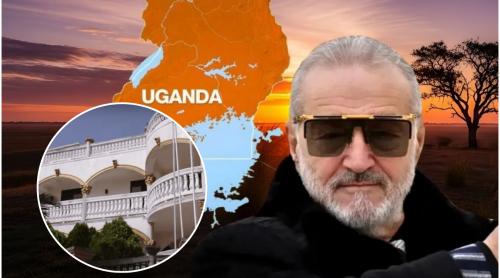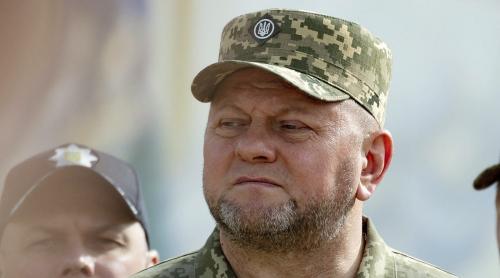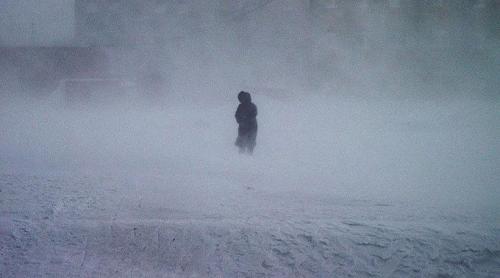
After the decision of the Constitutional Court in the case of Norica Nicolai, PM Calin Popescu Tariceanu defended himself on TV by showing a book called “The Revised Constitution of Romania. Comments and explanations”. I thought I didn’t have it in my library I used my connections to ask the PM for the book.
After the decision of the Constitutional Court in the case of Norica Nicolai, PM Calin Popescu Tariceanu defended himself on TV by showing a book called “The Revised Constitution of Romania. Comments and explanations”. I thought I didn’t have it in my library I used my connections to ask the PM for the book.
A few days later, I received an envelope from the PM’s adviser, which contained the book that the Prime Minister used to defend himself. The PM’s position regarding the interpretation of the 85th article, 2nd paragraph in the Constitution is well-known. The constitutional text reads: “In case of cabinet reshuffling or function vacancy, the President revokes and names, at the proposal of the Prime-minister, certain members of the Government”.
Calin Popescu Tariceanu believes that this text gives the President only formal prerogatives. Therefore, during the TV dialogue, he invoked the interpretation of the text made by those authors: Mihai Constantinescu, Antonie Iorgovan, Ioan Muraru, Elena Simina Tanasescu.
I have several books written by people that interpreted the revised Constitution in 2003 as well as the Constitution in 1991. I have to say that all the interpretations of the Constitutions in 1991 and 2003 say that this paragraph in the Constitution gives the President the right to have an opinion in this matter. In case this doesn’t happen, the President can reject the proposition of the PM. One of the best Constitution interpreters in our country, Ion Deleanu, who had a very important contribution to the Constitution in 1991, says in a note in his treaty of Constitutional law and political institutions: “Once the proposition is accepted, the naming of the person becomes a formality. However, if the President cannot choose, he has the possibility to reject the proposition that was made, which will result in a mediated selection of the candidatures for the Government.”
All the Constitution experts interpret the text this way because the Constitution in 1991 as well as the one in 2003 disperses the Power using the principle of the two keys: one key at the PM and one at the President. The debates in 1991 and the ones in 2003 concluded that the Constitution forced the President and the PM to work together. We believe this is a statement made by the authors of both constitutions to hide a certain fact: giving more power to the President in 1991 and 2003: Ion Iliescu.
The twenty-year-old democracy tradition lets us under the impression that, as far as the revoking and naming of the ministers, the President’s opinion was a simple opinion. Actually, Ion Iliescu and Emil Constantinescu decided the naming of most of the ministers. Ion Iliescu , for example, even though he resigned from the parties the member of which he was, he remained the leader. The PMs, Nicolae Vacaroiu and Adrian Nastase, were maneuvered by the socialist majority in the Parliament. How should we believe that they were the only ones that decided the naming of the ministers?
The current PM interpreted the Constitution using a newly published book. I opened it at page 145. The comment is very clear: “The Government’s naming is the consequence of the fact that the Romanian President is the chief of the executive power, on one hand, and this power is dual, on the other hand.”
I don’t know whether the PM had read this comment, which contradicts his interpretation of the Constitution. He surely read it on Friday, the 29th of February 2008, when he discussed with Traian Basescu about the proposition for the Minister of Justice. Made for Ion Iliescu, the Constitution in 1991 as well as the revised one in 2003 has to be changed in order to become a functional Constitution in the case of the cohabitation as well. However, until then, the President and the PM are forced to understand the circumstances.
A few days later, I received an envelope from the PM’s adviser, which contained the book that the Prime Minister used to defend himself. The PM’s position regarding the interpretation of the 85th article, 2nd paragraph in the Constitution is well-known. The constitutional text reads: “In case of cabinet reshuffling or function vacancy, the President revokes and names, at the proposal of the Prime-minister, certain members of the Government”.
Calin Popescu Tariceanu believes that this text gives the President only formal prerogatives. Therefore, during the TV dialogue, he invoked the interpretation of the text made by those authors: Mihai Constantinescu, Antonie Iorgovan, Ioan Muraru, Elena Simina Tanasescu.
I have several books written by people that interpreted the revised Constitution in 2003 as well as the Constitution in 1991. I have to say that all the interpretations of the Constitutions in 1991 and 2003 say that this paragraph in the Constitution gives the President the right to have an opinion in this matter. In case this doesn’t happen, the President can reject the proposition of the PM. One of the best Constitution interpreters in our country, Ion Deleanu, who had a very important contribution to the Constitution in 1991, says in a note in his treaty of Constitutional law and political institutions: “Once the proposition is accepted, the naming of the person becomes a formality. However, if the President cannot choose, he has the possibility to reject the proposition that was made, which will result in a mediated selection of the candidatures for the Government.”
All the Constitution experts interpret the text this way because the Constitution in 1991 as well as the one in 2003 disperses the Power using the principle of the two keys: one key at the PM and one at the President. The debates in 1991 and the ones in 2003 concluded that the Constitution forced the President and the PM to work together. We believe this is a statement made by the authors of both constitutions to hide a certain fact: giving more power to the President in 1991 and 2003: Ion Iliescu.
The twenty-year-old democracy tradition lets us under the impression that, as far as the revoking and naming of the ministers, the President’s opinion was a simple opinion. Actually, Ion Iliescu and Emil Constantinescu decided the naming of most of the ministers. Ion Iliescu , for example, even though he resigned from the parties the member of which he was, he remained the leader. The PMs, Nicolae Vacaroiu and Adrian Nastase, were maneuvered by the socialist majority in the Parliament. How should we believe that they were the only ones that decided the naming of the ministers?
The current PM interpreted the Constitution using a newly published book. I opened it at page 145. The comment is very clear: “The Government’s naming is the consequence of the fact that the Romanian President is the chief of the executive power, on one hand, and this power is dual, on the other hand.”
I don’t know whether the PM had read this comment, which contradicts his interpretation of the Constitution. He surely read it on Friday, the 29th of February 2008, when he discussed with Traian Basescu about the proposition for the Minister of Justice. Made for Ion Iliescu, the Constitution in 1991 as well as the revised one in 2003 has to be changed in order to become a functional Constitution in the case of the cohabitation as well. However, until then, the President and the PM are forced to understand the circumstances.
Citește pe Antena3.ro












